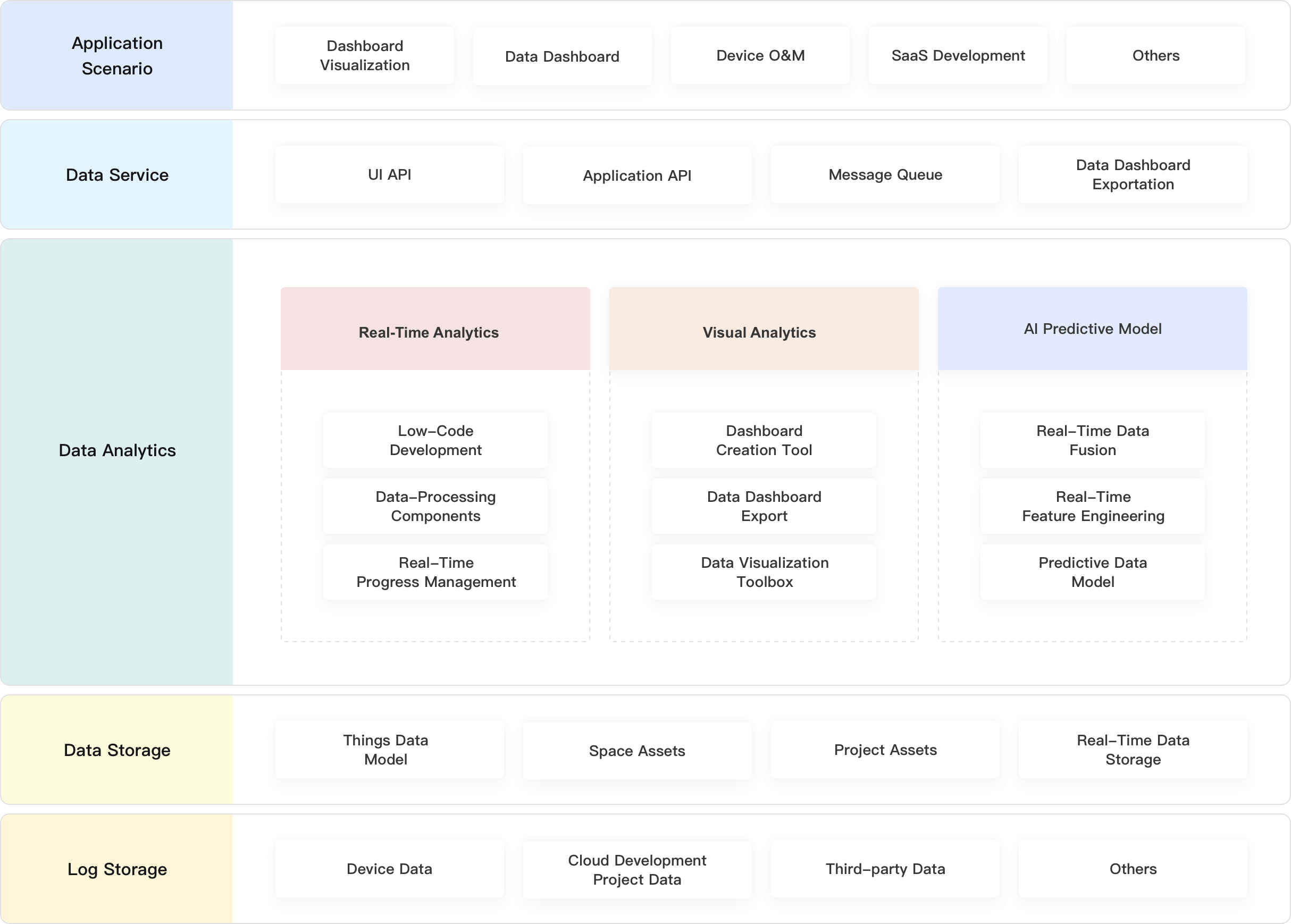Data Analytics
Last Updated on : 2024-06-21 06:55:23download
What is Data Analytics ?
Based on the smart device data, the Data Analytics offers one-stop services covering data integration, cleaning, storage, analytics, visualization, and custom data APIs. You can easily and efficiently perform development to explore unlimited data value.
Key features:
Data integration
Data sources used for IoT data analytics. You must define at least one data source to perform data analytics.
- Product data source: Data sources from your products. You can only select one product for one data source.
- Cloud development data source: Data sources from your cloud development projects. Note that you must have created at least one cloud development project beforehand. If you want to manage your assets including devices and space, go to configure them in your cloud development project.
Data processing
Process data from a specified data source. You can configure rules through Flink SQL code editing or low-code graphical user interfaces. You can filter exception data, enrich and aggregate data, and remove fields as needed.
The processed data specifies the way to store and generate Kafka and MQTT messages for billing users.
Data storage
Three types of data tables are available for data storage:
- Real-time table: Generate table structures by processing real-time tasks. Process data in real time and write the data to the table.
- Offline table: Used for dimension association. Only .CSV files are supported.
- Time-series table (coming soon): Store data in a time-series database to perform analytics based on time series.
Data services
You can encapsulate stored data into data APIs that panels or applications can call. Two types of APIs are available:
- Panel API: Used for data visualization in the panel.
- Application API: Available for a third party. Only cloud-to-cloud connectivity is supported.
Product architecture

Is this page helpful?
YesFeedbackIs this page helpful?
YesFeedback





